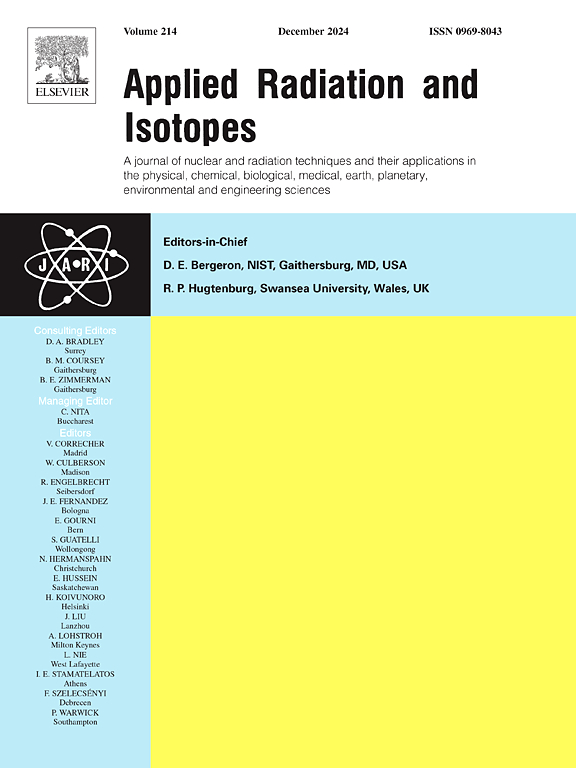Study of the reduction in the time of counting in spectrometric analysis using HPGe detector for samples of fresh organic foods
IF 1.6
3区 工程技术
Q3 CHEMISTRY, INORGANIC & NUCLEAR
引用次数: 0
Abstract
The quantification of natural radionuclides within environmental matrices is commonly executed via gamma spectrometry, employing HPGe detector. Variability in counting times is reported in the literature, often predicated on empirical knowledge. This study aims to estimate a reduction in counting time in the process of analyzing activity concentration of 40K radionuclide, based on reducing the percentage variation of their uncertainties, in some fresh and frozen organic vegetables, grown in an environmental conservation unit. For each sample, 10 count measurements were taken at regular intervals of 3600 s over a period of 36,000 s using the HPGe detector and the Genie 2000 data acquisition software. The background spectrum was obtained at the same time intervals and with the same sample geometry. Efficiency curves and self-attenuation corrections were performed using the LabSOCS software. Considering the counting times 25,200 s and 36,000 s, the determined 40K activity concentration (Bq.kg−1) for lady's finger banana, cabbage and carrot were (107 ± 16.49; 109 ± 16.35), (79 ± 12.77; 81 ± 12.62) and (100 ± 15.44; 102 ± 15.36), respectively. The activity concentrate uncertainty starts to vary slightly and began to stabilize from 25,200s onwards. The results indicate that considering the employed methodology, extending the counting time for fresh and frozen organic foods would not yield a significant advantage over reducing the detector operation time.
求助全文
约1分钟内获得全文
求助全文
来源期刊

Applied Radiation and Isotopes
工程技术-核科学技术
CiteScore
3.00
自引率
12.50%
发文量
406
审稿时长
13.5 months
期刊介绍:
Applied Radiation and Isotopes provides a high quality medium for the publication of substantial, original and scientific and technological papers on the development and peaceful application of nuclear, radiation and radionuclide techniques in chemistry, physics, biochemistry, biology, medicine, security, engineering and in the earth, planetary and environmental sciences, all including dosimetry. Nuclear techniques are defined in the broadest sense and both experimental and theoretical papers are welcome. They include the development and use of α- and β-particles, X-rays and γ-rays, neutrons and other nuclear particles and radiations from all sources, including radionuclides, synchrotron sources, cyclotrons and reactors and from the natural environment.
The journal aims to publish papers with significance to an international audience, containing substantial novelty and scientific impact. The Editors reserve the rights to reject, with or without external review, papers that do not meet these criteria.
Papers dealing with radiation processing, i.e., where radiation is used to bring about a biological, chemical or physical change in a material, should be directed to our sister journal Radiation Physics and Chemistry.
 求助内容:
求助内容: 应助结果提醒方式:
应助结果提醒方式:


